The pasture is not a lawn. It is not a monoculture. My brother says it is more of a salad bar for sheep. Unless you walk around out there you don't realize the number of plants that grow there. I am embarrassed that after 16 years of living here I don't know the names of all of them. I have decided to change that. I am going to combine my enjoyment of photography and my recently dredged up college hobby (and class projects) of pressing plants and create a personalized herbarium of sorts. These photos are a start.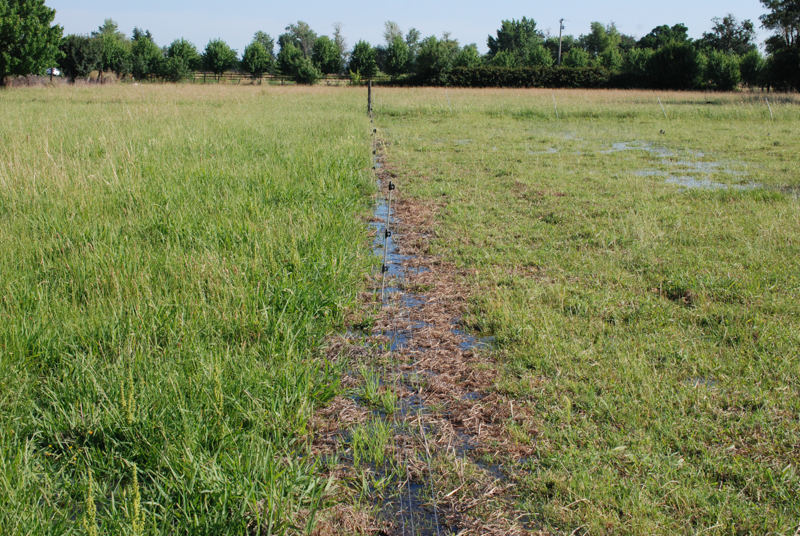 I irrigated this weekend. The sheep were just moved off the paddock to the right and when it dries up enough they will go on the one to the left. Can you see the difference? It took only two days for them to eat that feed.
I irrigated this weekend. The sheep were just moved off the paddock to the right and when it dries up enough they will go on the one to the left. Can you see the difference? It took only two days for them to eat that feed.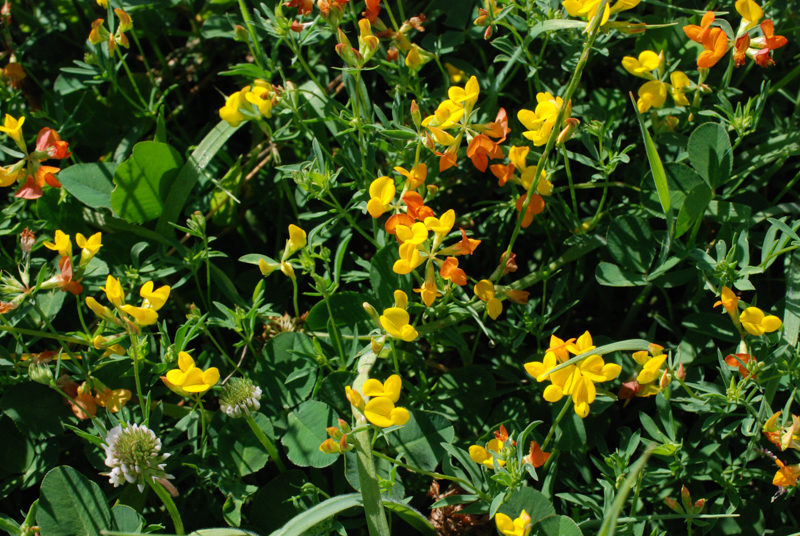 One of their favorite plants is Birdsfoot Trefoil. It is a legume which means it is one of the plants that converts nitrogen in the air to a form that can be used by the plant. It is actually not the plant that does that but the bacteria that live in nodules on the roots of legumes.
One of their favorite plants is Birdsfoot Trefoil. It is a legume which means it is one of the plants that converts nitrogen in the air to a form that can be used by the plant. It is actually not the plant that does that but the bacteria that live in nodules on the roots of legumes.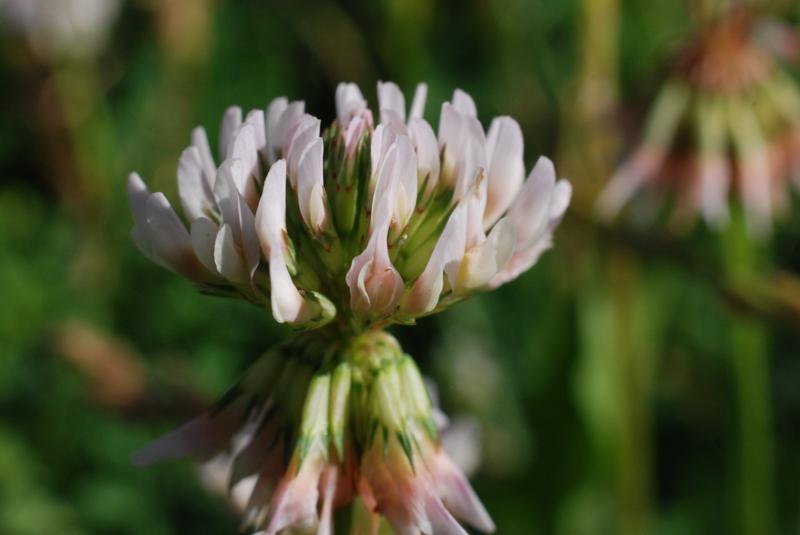 Clovers are also legumes. This is a variety of white clover.
Clovers are also legumes. This is a variety of white clover.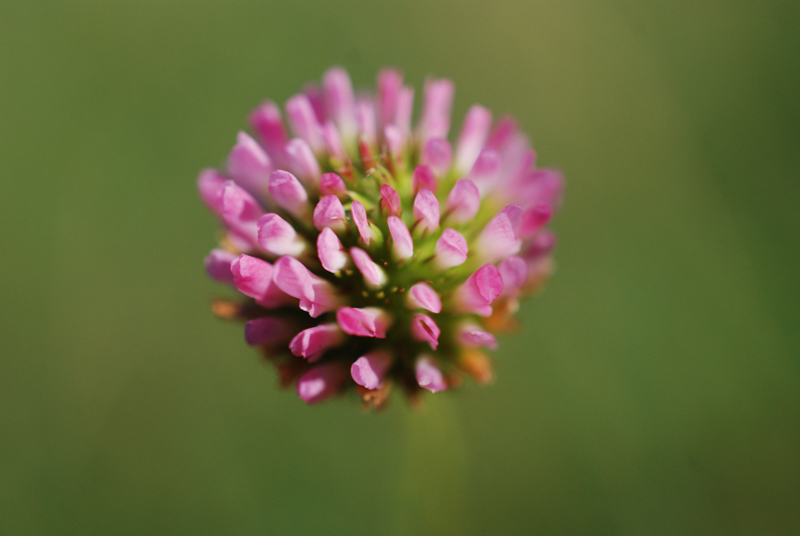 This morning I noticed just a few of these flowers. I can't decide if this is a variant of the white clover or is a different species. The leaves are similar. I'll have to do some more checking.
This morning I noticed just a few of these flowers. I can't decide if this is a variant of the white clover or is a different species. The leaves are similar. I'll have to do some more checking. Do you see how most of the other plants have been eaten and this one has not been touched? The sheep avoid plants that are toxic to them. This is Narrow-leaved Milkweed (Asclepias fascicularis). Not only is it a favored species for the monarch butterfly but according to a Plant Guide published by the NRCS "Zuni people utilize the silky seed fibers, which are spun on a hand-held wooden spindle, made into yarn, and woven into fabric (especially for dancers)...Milkweeds supply tough fibers for making cords and ropes, and for weaving a coarse cloth. Milkweeds stems are collected after the stalks dry in late fall to early winter. The dried stalks are split open to release the fibers. Milkweed fibers are sometimes mixed with fibers of Indian hemp, Apocynum cannabinum." Sounds like a good challenge to my fiber-loving friends.
Do you see how most of the other plants have been eaten and this one has not been touched? The sheep avoid plants that are toxic to them. This is Narrow-leaved Milkweed (Asclepias fascicularis). Not only is it a favored species for the monarch butterfly but according to a Plant Guide published by the NRCS "Zuni people utilize the silky seed fibers, which are spun on a hand-held wooden spindle, made into yarn, and woven into fabric (especially for dancers)...Milkweeds supply tough fibers for making cords and ropes, and for weaving a coarse cloth. Milkweeds stems are collected after the stalks dry in late fall to early winter. The dried stalks are split open to release the fibers. Milkweed fibers are sometimes mixed with fibers of Indian hemp, Apocynum cannabinum." Sounds like a good challenge to my fiber-loving friends. These are Narrow-leaved Milkweed flowers in various stages...
These are Narrow-leaved Milkweed flowers in various stages...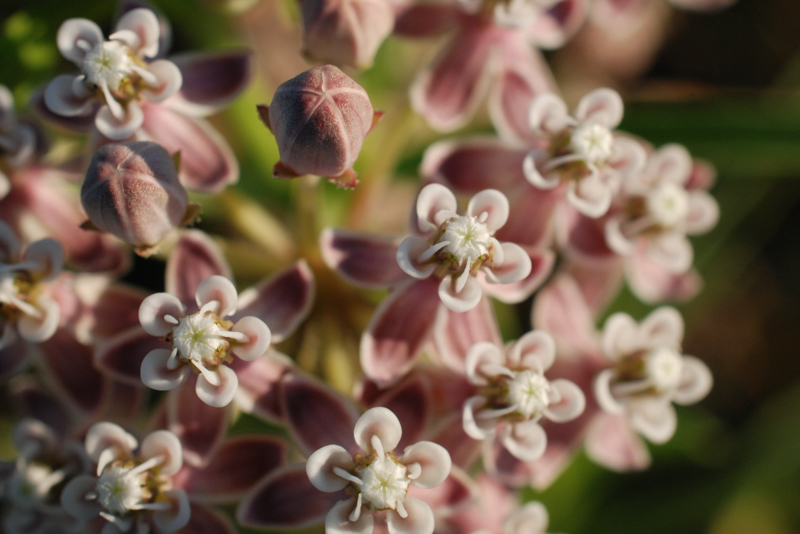 ...and a close-up.
...and a close-up.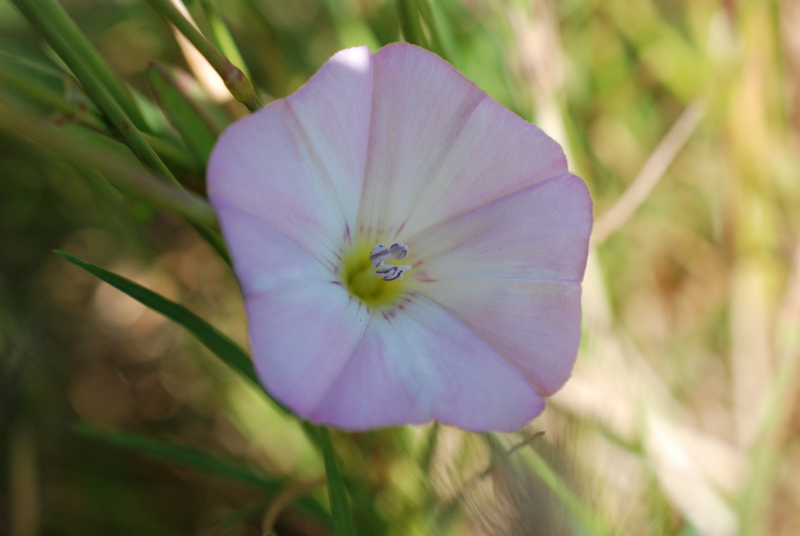 Field bindweed (Convolvulaceae arvensis), also known as morning glory. It is, according to a U.C. IPM website, "a perennial broadleaf, is considered one of the most problematic weeds in agricultural fields throughout temperate regions worldwide".
Field bindweed (Convolvulaceae arvensis), also known as morning glory. It is, according to a U.C. IPM website, "a perennial broadleaf, is considered one of the most problematic weeds in agricultural fields throughout temperate regions worldwide".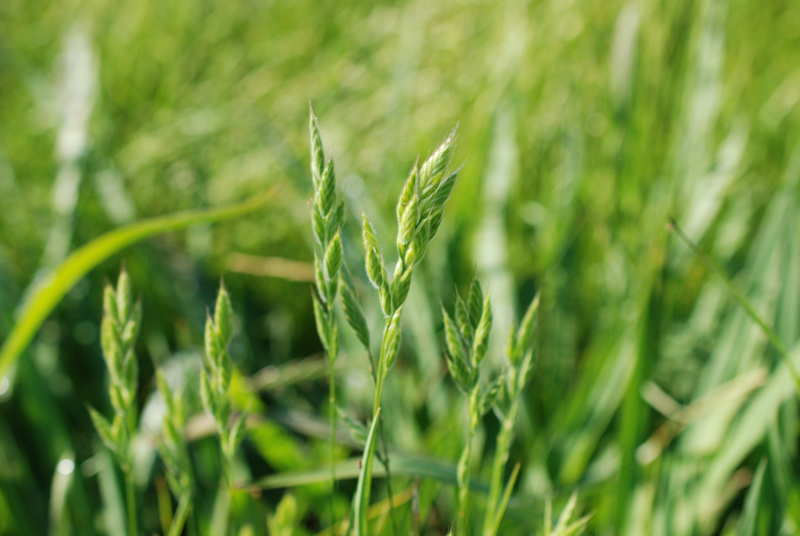 Soft Chess or Soft Brome, a non-native annual grass.
Soft Chess or Soft Brome, a non-native annual grass.
Hare Barley. Also from the U.C. IPM site, "It is a useful livestock forage early in the season before the flower spikes develop. However, at maturity the spikelets have stiff, barbed, needle-like awns, and sharp bases that can injure the mouth, eyes, nasal passages, ears, and skin of animals." Those are one of the many grass seeds we call foxtails and spend a fortune getting out of dogs ears and noses and agonize over when we find an otherwise beautiful fleece full of them.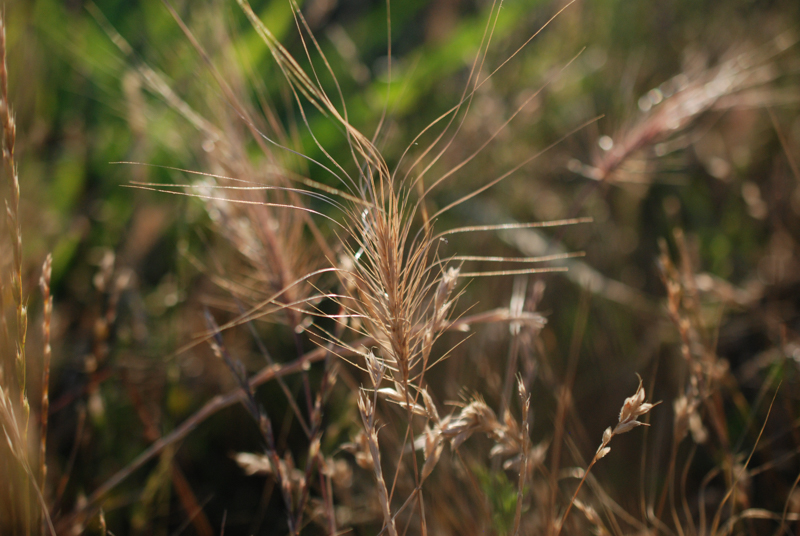 Medusahead as it is drying out. Medusahead covers thousands of acres of California foothills. It is not normally found in irrigated pasture, but it is in the easternmost paddock here which sometimes does not irrigate well. I have reclaimed part of that paddock, but I continually fight this plant. I find patches of it in other areas of the pasture and, although this is not an effective control technique, I pull it up by the handfuls as I walk by, coming back to the barn with it stuffed in the pockets of my overalls. It is a nasty plant that is "...among the worst weeds: not only does medusahead compete for resources with more desirable species, but it changes ecosystem function to favor its own survival at the expense of the entire ecosystem...Because grazing animals selectively avoid this plant, and because medusahead thatch tends to suppress desirable forage species, infestations often develop into near-monotypic stands." From the U.C. Davis Medusahead Management Guide.
Medusahead as it is drying out. Medusahead covers thousands of acres of California foothills. It is not normally found in irrigated pasture, but it is in the easternmost paddock here which sometimes does not irrigate well. I have reclaimed part of that paddock, but I continually fight this plant. I find patches of it in other areas of the pasture and, although this is not an effective control technique, I pull it up by the handfuls as I walk by, coming back to the barn with it stuffed in the pockets of my overalls. It is a nasty plant that is "...among the worst weeds: not only does medusahead compete for resources with more desirable species, but it changes ecosystem function to favor its own survival at the expense of the entire ecosystem...Because grazing animals selectively avoid this plant, and because medusahead thatch tends to suppress desirable forage species, infestations often develop into near-monotypic stands." From the U.C. Davis Medusahead Management Guide.
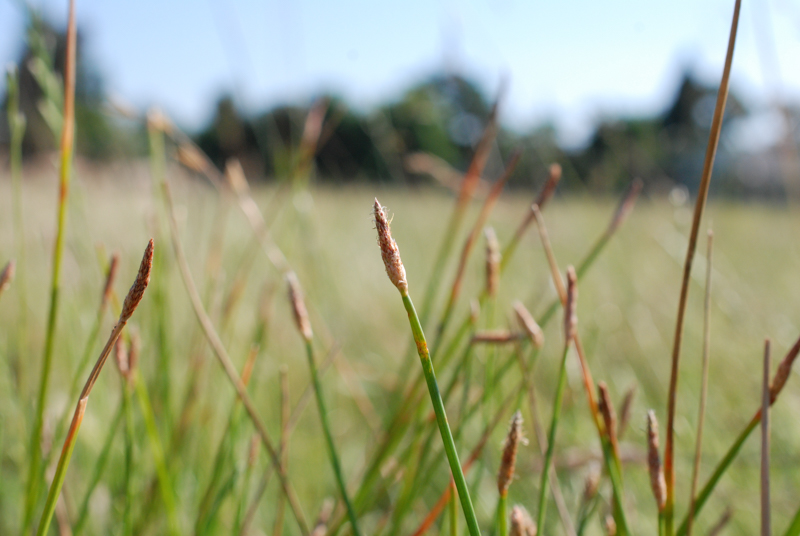 I have ID'd this one as Blunt Spikerush (Eleocharis obtusa), not a grass, but a sedge that is found on poorly drained soil and marshy areas. That's my pasture...poorly drained soil. There is a lot of this sedge in the middle and south end of three or four of the paddocks. It looks like foot-tall grass, but that is why it is important to actually look at what is out there. This does not make good forage.
I have ID'd this one as Blunt Spikerush (Eleocharis obtusa), not a grass, but a sedge that is found on poorly drained soil and marshy areas. That's my pasture...poorly drained soil. There is a lot of this sedge in the middle and south end of three or four of the paddocks. It looks like foot-tall grass, but that is why it is important to actually look at what is out there. This does not make good forage.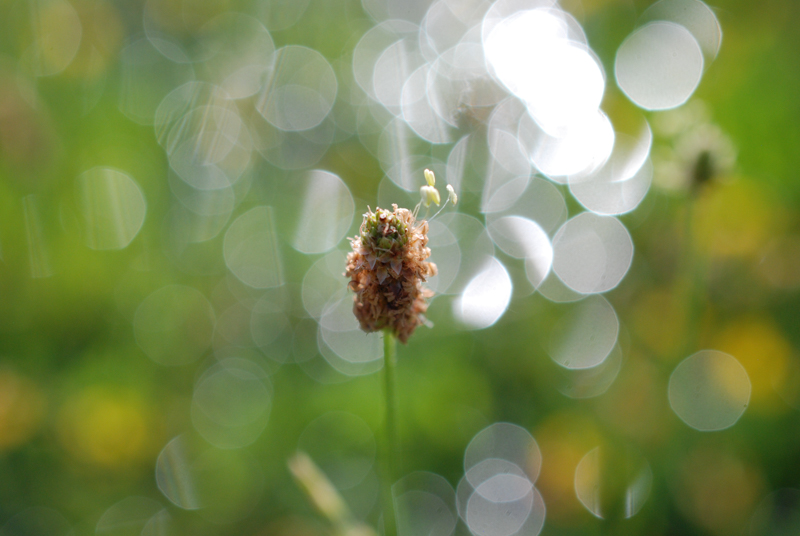 A rather artsy shot of Buckhorn Plantain, found throughout California...
A rather artsy shot of Buckhorn Plantain, found throughout California...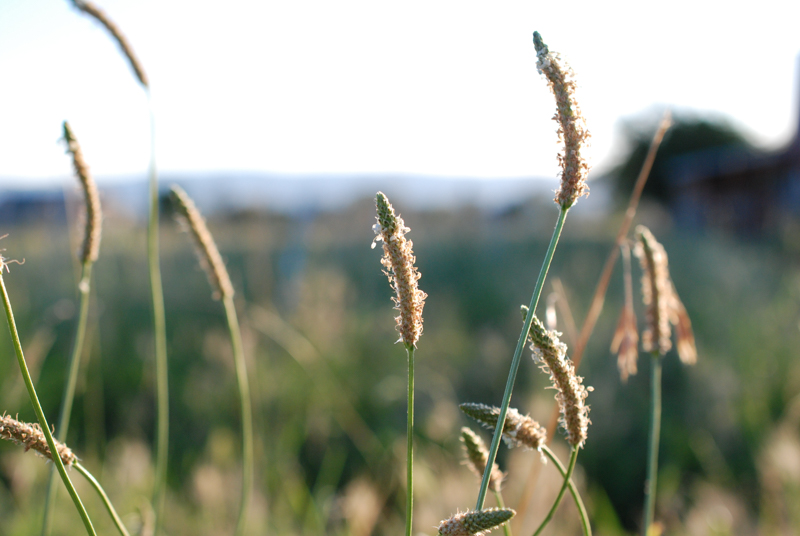 ...and a photo in which you will probably more easily recognize it.
...and a photo in which you will probably more easily recognize it.
Well, that's nine species of plants in the pasture. There are dozens more to go.
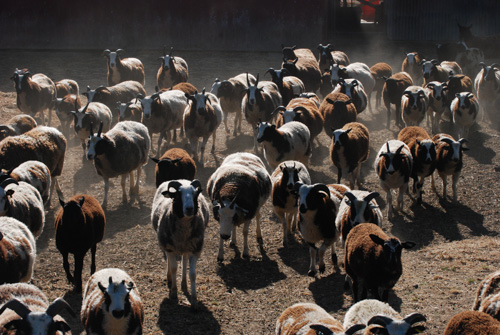 The sheep followed me to the horse pasture gate but I didn't let them out there.
The sheep followed me to the horse pasture gate but I didn't let them out there. 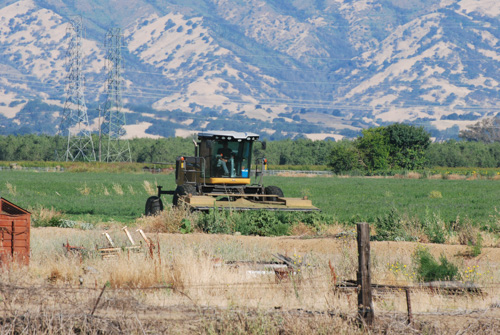
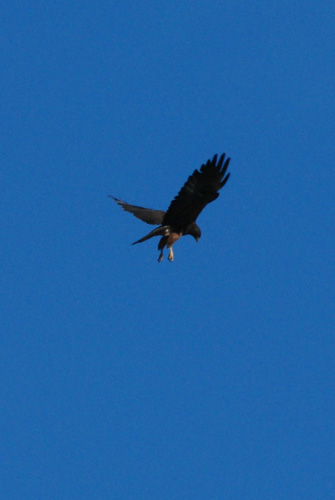
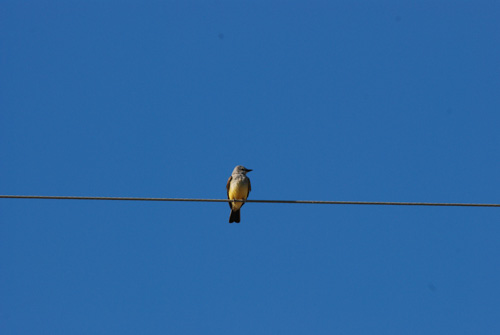
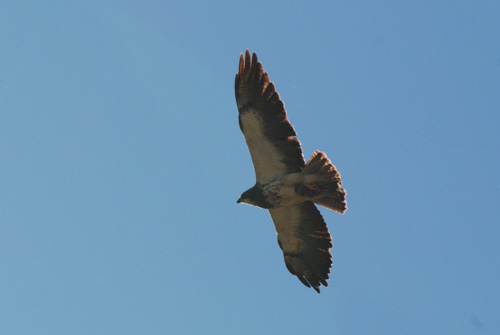
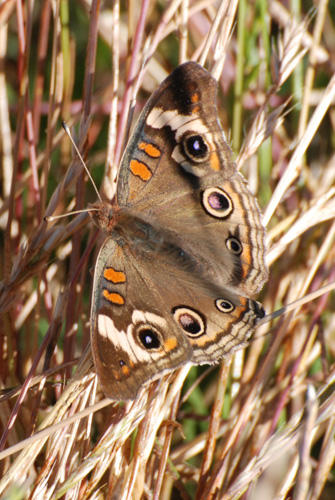
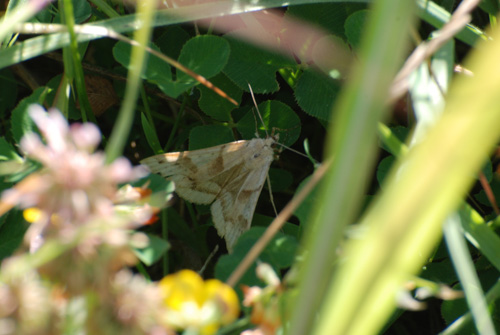
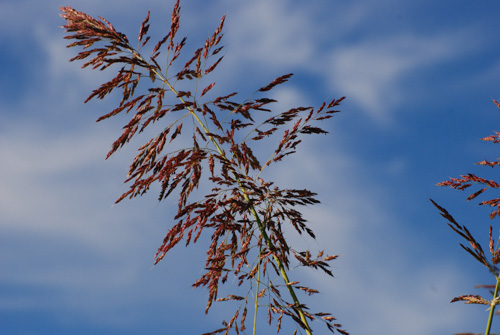
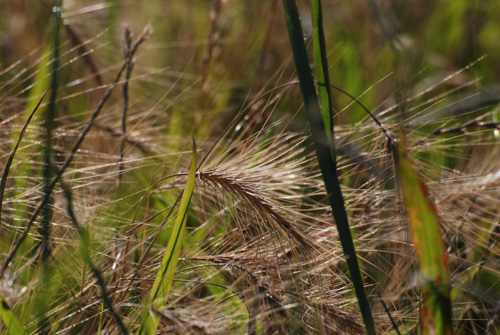
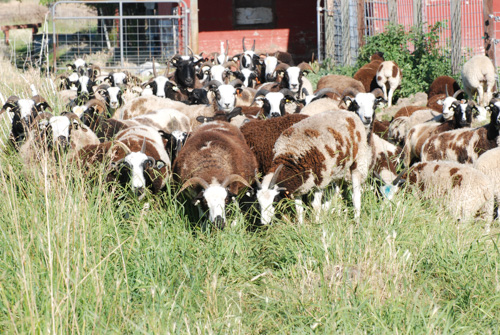

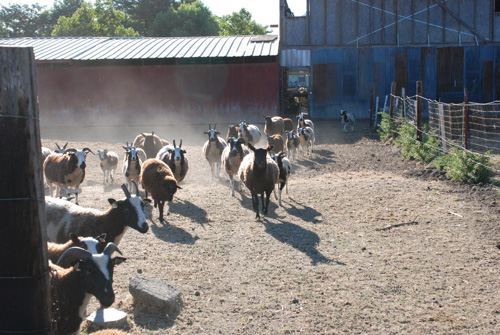 I changed the fence to move the sheep from the south half of the Horse Pasture (no horses for a long time) to the north half. They came running.
I changed the fence to move the sheep from the south half of the Horse Pasture (no horses for a long time) to the north half. They came running.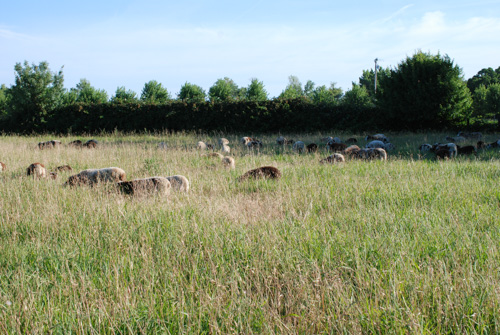
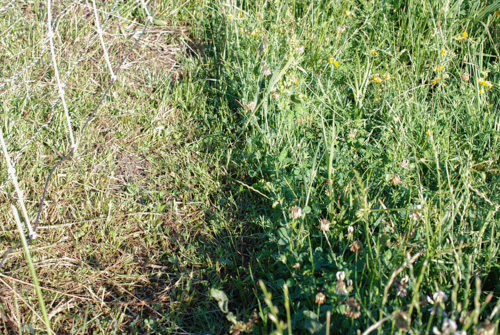
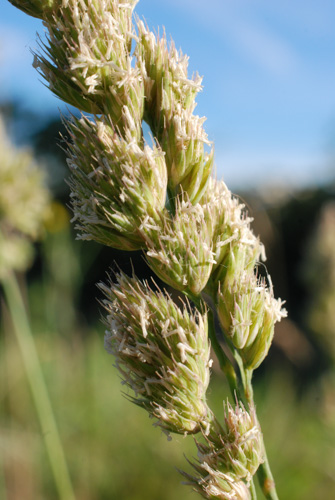
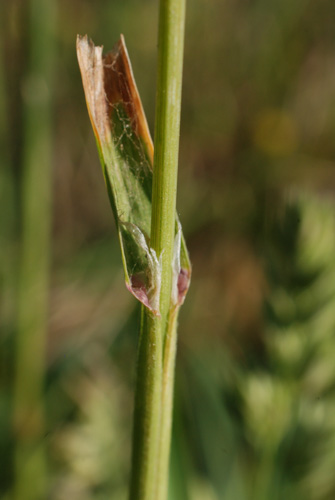
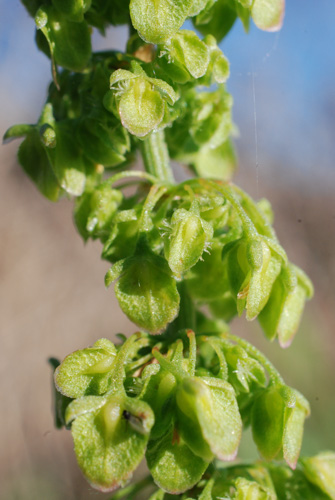
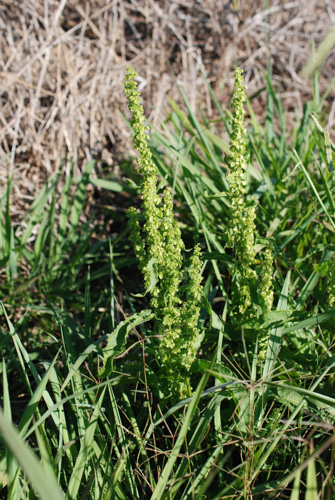
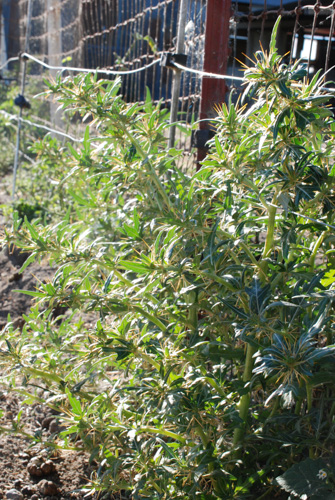
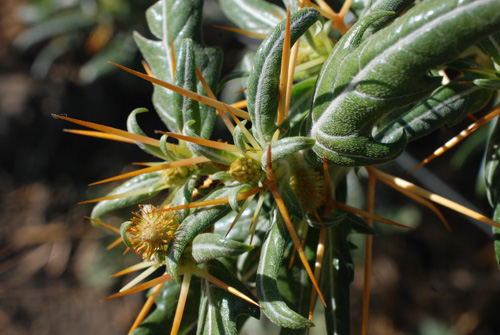
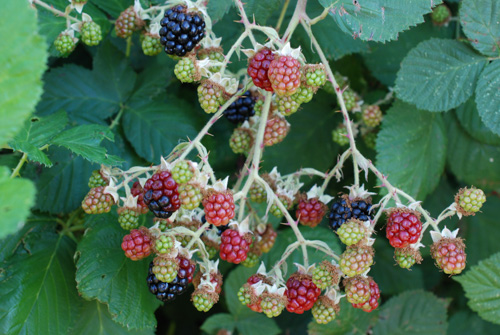
 I irrigated this weekend. The sheep were just moved off the paddock to the right and when it dries up enough they will go on the one to the left. Can you see the difference? It took only two days for them to eat that feed.
I irrigated this weekend. The sheep were just moved off the paddock to the right and when it dries up enough they will go on the one to the left. Can you see the difference? It took only two days for them to eat that feed. One of their favorite plants is Birdsfoot Trefoil. It is a legume which means it is one of the plants that converts nitrogen in the air to a form that can be used by the plant. It is actually not the plant that does that but the bacteria that live in nodules on the roots of legumes.
One of their favorite plants is Birdsfoot Trefoil. It is a legume which means it is one of the plants that converts nitrogen in the air to a form that can be used by the plant. It is actually not the plant that does that but the bacteria that live in nodules on the roots of legumes. Clovers are also legumes. This is a variety of white clover.
Clovers are also legumes. This is a variety of white clover. This morning I noticed just a few of these flowers. I can't decide if this is a variant of the white clover or is a different species. The leaves are similar. I'll have to do some more checking.
This morning I noticed just a few of these flowers. I can't decide if this is a variant of the white clover or is a different species. The leaves are similar. I'll have to do some more checking. Do you see how most of the other plants have been eaten and this one has not been touched? The sheep avoid plants that are toxic to them. This is Narrow-leaved Milkweed (Asclepias fascicularis). Not only is it a favored species for the monarch butterfly but according to a
Do you see how most of the other plants have been eaten and this one has not been touched? The sheep avoid plants that are toxic to them. This is Narrow-leaved Milkweed (Asclepias fascicularis). Not only is it a favored species for the monarch butterfly but according to a  These are Narrow-leaved Milkweed flowers in various stages...
These are Narrow-leaved Milkweed flowers in various stages... ...and a close-up.
...and a close-up. Field bindweed (Convolvulaceae arvensis), also known as morning glory. It is, according to a
Field bindweed (Convolvulaceae arvensis), also known as morning glory. It is, according to a  Soft Chess or Soft Brome, a non-native annual grass.
Soft Chess or Soft Brome, a non-native annual grass.
 Medusahead as it is drying out. Medusahead covers thousands of acres of California foothills. It is not normally found in irrigated pasture, but it is in the easternmost paddock here which sometimes does not irrigate well. I have reclaimed part of that paddock, but I continually fight this plant. I find patches of it in other areas of the pasture and, although this is not an effective control technique, I pull it up by the handfuls as I walk by, coming back to the barn with it stuffed in the pockets of my overalls. It is a nasty plant that is "...among the worst weeds: not only does medusahead compete for resources with more desirable species, but it changes ecosystem function to favor its own survival at the expense of the entire ecosystem...Because grazing animals selectively avoid this plant, and because medusahead thatch tends to suppress desirable forage species, infestations often develop into near-monotypic stands." From the
Medusahead as it is drying out. Medusahead covers thousands of acres of California foothills. It is not normally found in irrigated pasture, but it is in the easternmost paddock here which sometimes does not irrigate well. I have reclaimed part of that paddock, but I continually fight this plant. I find patches of it in other areas of the pasture and, although this is not an effective control technique, I pull it up by the handfuls as I walk by, coming back to the barn with it stuffed in the pockets of my overalls. It is a nasty plant that is "...among the worst weeds: not only does medusahead compete for resources with more desirable species, but it changes ecosystem function to favor its own survival at the expense of the entire ecosystem...Because grazing animals selectively avoid this plant, and because medusahead thatch tends to suppress desirable forage species, infestations often develop into near-monotypic stands." From the  I have ID'd this one as Blunt Spikerush (Eleocharis obtusa), not a grass, but a sedge that is found on poorly drained soil and marshy areas. That's my pasture...poorly drained soil. There is a lot of this sedge in the middle and south end of three or four of the paddocks. It looks like foot-tall grass, but that is why it is important to actually look at what is out there. This does not make good forage.
I have ID'd this one as Blunt Spikerush (Eleocharis obtusa), not a grass, but a sedge that is found on poorly drained soil and marshy areas. That's my pasture...poorly drained soil. There is a lot of this sedge in the middle and south end of three or four of the paddocks. It looks like foot-tall grass, but that is why it is important to actually look at what is out there. This does not make good forage. A rather artsy shot of Buckhorn Plantain, found throughout California...
A rather artsy shot of Buckhorn Plantain, found throughout California... ...and a photo in which you will probably more easily recognize it.
...and a photo in which you will probably more easily recognize it.